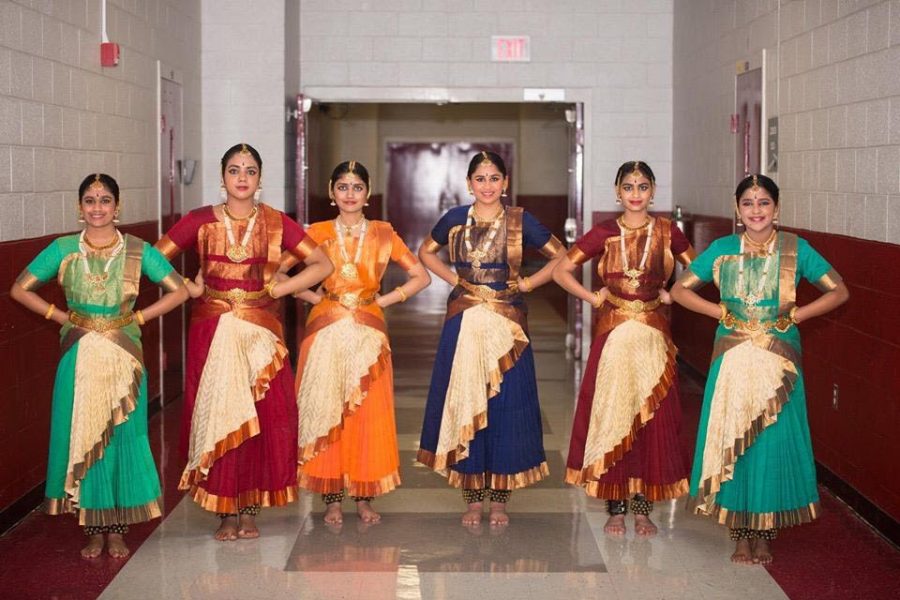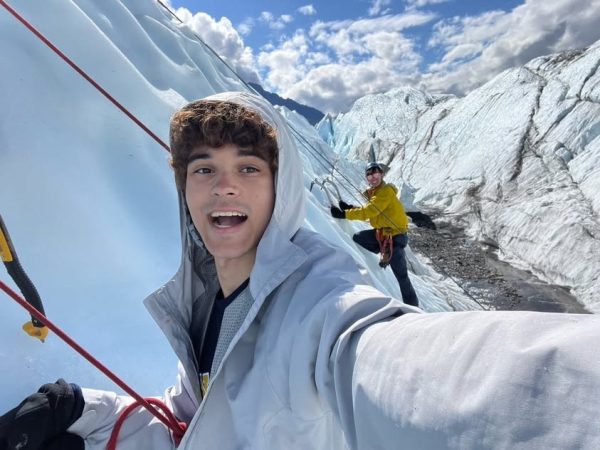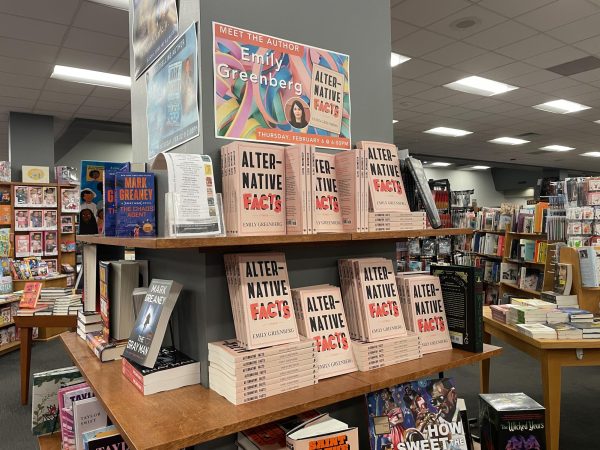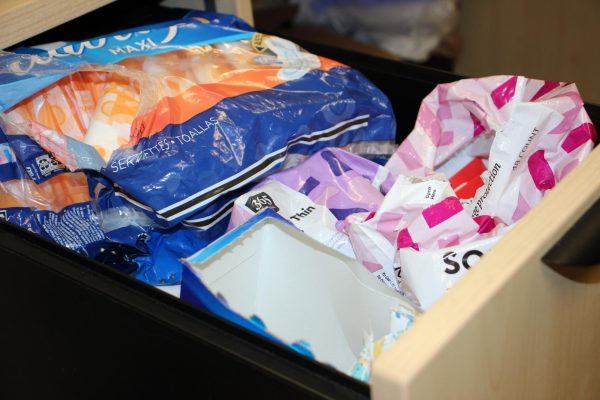Storytelling through dance: The art of Bharatanatyam
Tanya Prahalathan (10), Shivani Menon, Minnu Reddivari (10), Elina Salian (10), Sharika Sivakumar, and Arya Rajesh (9) pose at an event for the Tamil Association. These Bharatanatyam dancers meet for practice once a week and perform together several times a year.
In the Darshini Natyalaya School of Dance, music, gestures and intricate steps combine to tell stories. Arya Rajesh (9), Tanya Prahalathan (10), Minnu Reddivari (10) and Elina Salian (10) have told stories through Bharatanatyam classical Indian dance for the last seven years.”
“Bharatanatyam is one of the oldest dance forms,” Prahalathan said. “Originally because the common people didn’t read the Hindu scriptures, they used dances along with the songs and music to tell stories about different Hindu gods and goddesses.”
Their Bharatanatyam dance careers began with mastering basic footwork, hand motions and facial expressions, which are the components of more complex dances.
“There’s a kind of thrill that you get from doing something right一especially with the rhythms. I love when you get to go through the dance ‘bang-bang-bang,’” Reddivari said, imitating the beat of her foot against the ground while she dances.
Their Bharatanatyam group’s performances range from Indian community programs to the Germantown International Festival, where they have showcased their talents for the past five years. One large component of their performances is the six-layer costumes handmade in India that can take the dancers two or three hours to put on.
“You wear a lot of makeup and jewelry. You’re supposed to accent your eyes and wear a really long braid,” Salian said. “The costume is to make you a beautiful dancer, explaining the story. You’re supposed to stand out and be really expressive.”
The girls agree that Indian dancing is more than an extracurricular or entertainment. It represents both cultural and religious stories. Their dedication to dance has led to lifelong friendships between the team members, as well as a better understanding of their own history.
“This is another way for me to see all the stories that my parents grew up with. It’s a way for me to connect with my culture and see where my parents come from,” Reddivari said.
Your donation will support the student journalists of White Station High School. Your contribution will allow us to purchase equipment and cover our annual website hosting costs.






































